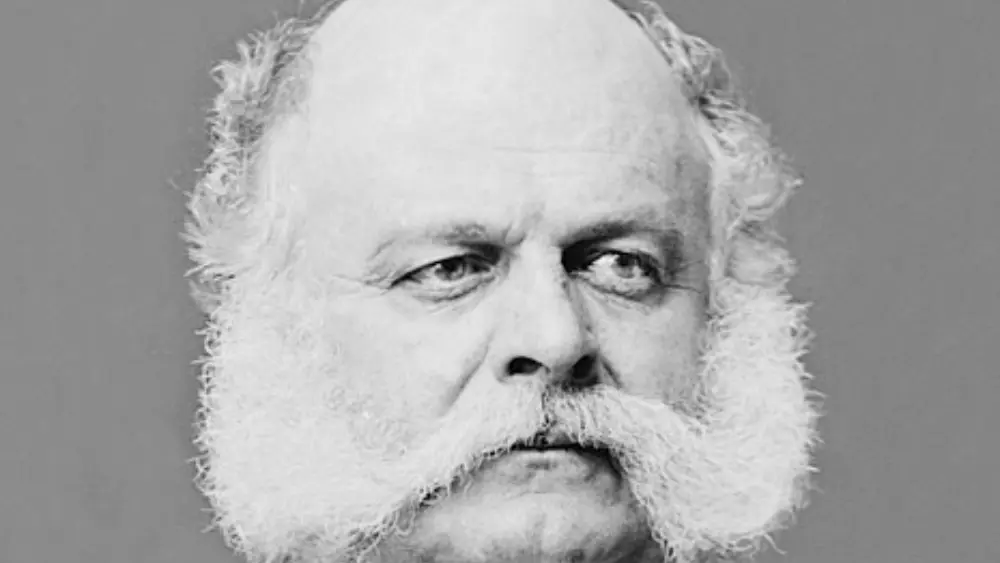Ambrose Burnside, born on May 23, 1824, in Liberty, Indiana, was a multifaceted figure in American history, known for his roles as a Union Army general during the Civil War and a prominent political figure. His legacy is marked by both military accomplishments and political endeavors that shaped the post-war landscape.
Early Military Career and Engineering Prowess
Ambrose Burnside’s military career began with a solid foundation in engineering, as evidenced by his studies at the United States Military Academy at West Point. Graduating in 1847, Burnside demonstrated an early aptitude for engineering, and his academic achievements set the stage for a career marked by technical expertise. Following his graduation, Burnside’s skills were put to use in several engineering projects, where he earned accolades for his proficiency in this critical field. His early experiences in engineering not only showcased his technical prowess but also laid the groundwork for the diverse roles he would later assume in the military.
Burnside’s engineering acumen was not only confined to academic achievements but also found practical applications in military settings. His proficiency in engineering projects contributed to his rising reputation within the military community, setting the stage for the multifaceted career that would define his contributions to the Union during the American Civil War.
Ambrose Burnside: Innovations in Firearm Design
Ambrose Burnside’s influence on the U.S. military extended into firearm design, where he made significant contributions during the Civil War. His notable innovation was the Burnside carbine, a breech-loading rifle that marked a departure from traditional muzzle-loading firearms. The Burnside carbine’s breech-loading mechanism allowed soldiers to reload more quickly, providing a distinct advantage on the battlefield. This advancement in military technology demonstrated Burnside’s commitment to modernizing weaponry and improving the efficiency and firepower of Union forces.
The Burnside carbine became a crucial tool for Union cavalry, showcasing Burnside’s ability to bridge the gap between military strategy and technological innovation. This inventive approach not only contributed to the Union’s military capabilities but also highlighted Burnside’s forward-thinking mindset during a period of significant transformation in warfare.
Civil War Service and Rise to Prominence
During the Civil War, Ambrose Burnside’s military career reached new heights as he navigated the challenges of the conflict and demonstrated his leadership abilities on various fronts. His noteworthy achievements in campaigns, particularly in North Carolina, marked him as a capable and strategic commander. Burnside’s success on the battlefield contributed to his rise to prominence within the Union Army, earning him recognition for his tactical skills and effectiveness in achieving military objectives.
Burnside’s leadership during key engagements, such as the victories in North Carolina, not only bolstered Union morale but also solidified his position as a prominent figure in the Union Army’s command structure. His ability to navigate the complexities of warfare and secure victories played a pivotal role in shaping the course of the Civil War, establishing Burnside as a respected military leader with a significant impact on the Union’s military successes.
Ambrose Burnside: Burnside Bridge at Antietam
The Battle of Antietam during the Civil War notably intertwines Ambrose Burnside’s legacy with the U.S. military. At this pivotal engagement, Burnside faced a significant challenge at the Burnside Bridge, a key crossing point over Antietam Creek. The bridge, despite its name, posed a formidable obstacle due to its elevated position and the concentrated Confederate defenses on the opposite bank. Burnside’s determination and tactical acumen came to the fore as he orchestrated multiple attempts to secure the crossing. Despite facing considerable adversity, his forces eventually succeeded in crossing the bridge, contributing to the Union victory in the larger battle.
The Burnside Bridge at Antietam became emblematic of the general’s resolve and dedication to achieving military objectives. It stands as a historic landmark symbolizing Burnside’s tenacity in the face of adversity and his role in the Union’s success at the Battle of Antietam, one of the bloodiest conflicts of the Civil War.
Political Career and Governorship of Rhode Island
Post-war, Burnside transitioned to a distinguished political career, serving as the governor of Rhode Island from 1866 to 1869. His leadership during this period was marked by a commitment to Reconstruction policies, reflecting his dedication to healing the wounds of the Civil War and fostering unity in the aftermath of the conflict. Burnside’s governorship played a crucial role in Rhode Island’s response to the challenges of Reconstruction, an era defined by efforts to rebuild and reunify the nation.
As governor, Burnside’s policies addressed post-war divisions within the state, contributing to the broader national endeavor to reconcile the nation. His dedication to Reconstruction showcased a belief in the principles of democracy and a vision of a more united and equitable nation emerging from the challenges of civil strife. Burnside’s political legacy extended beyond his military achievements, highlighting his commitment to public service and his role in shaping the post-war landscape of Rhode Island.
Ambrose Burnside: Burnside’s Side Whiskers
Ambrose Burnside’s distinctive facial hair, known as side whiskers or “burnsides,” became a defining feature of his public image. The unique style, where facial hair extends from the sideburns down to the jawline without a mustache, gained attention during Burnside’s military and political career. Interestingly, the term “burnsides” eventually evolved into the more commonly used “sideburns,” a testament to Burnside’s lasting impact on men’s grooming styles. Despite the attention to his facial hair, Burnside’s military and political contributions remained the central focus of his legacy, but his distinctive sideburns added a touch of individuality to his public persona.
Burnside’s side whiskers, while garnering attention for their unique style, did not overshadow his accomplishments in the military and political spheres. The enduring association of his name with a particular style of facial hair became a quirky and enduring aspect of his legacy, showcasing how personal traits can sometimes take on a life of their own in the collective memory of history.

U.S. Senate Tenure and Legacy
Ambrose Burnside’s political career extended to the U.S. Senate, where he served as a senator from Rhode Island on multiple occasions. His tenure in the Senate was marked by a commitment to Veterans’ issues and continued public service, reflecting his dedication to the well-being of the nation and its military personnel. Burnside’s experience as a Civil War general provided him with a unique perspective on the challenges facing Veterans, and he advocated for policies that would support and honor those who had served. In the Senate, he intertwined his legacy with his military service, creating a narrative of a leader who transitioned from the battlefield to the halls of government with a continued focus on the welfare of those who had served under his command.
Burnside’s legacy as a senator goes beyond his specific policy initiatives. His time in the Senate adds another layer to his multifaceted career, showcasing a leader who, even in peacetime, remained dedicated to the principles of service and responsibility. As he navigated the complexities of post-war America, Burnside’s commitment to the well-being of Veterans and the nation left an indelible mark on his legacy in the political arena.




